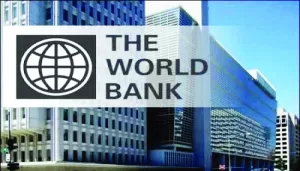World Bank Supports Rwanda Development through Urbanization
The World Bank’s Board of Executive Directors has approved a US$95 million International Development Association (IDA)* credit to support Rwanda’s urbanization strategy through targeted infrastructure development and support for local economic development in six secondary cities.
Through its main component, the Urban Development Project (RUDP) will support provision of basic infrastructure to enhance living conditions for residents in six secondary cities, namely Muhanga, Rubavu, Rusizi, Nyagatare, Huye, and Musanze and support local economic development in these cities. Eligible investments are those that are directly under the mandate of the district governments such as roads, drainage, solid waste management, and sanitation.
To create an enabling environment for local economic development, roads and associated infrastructure improvements will be made to connect different Agakiriro Centers, commercial areas in the urban core, industrial parks, and Business Development and Employment Centers. The project will also support the upgrading of an 86 hectares of unplanned settlement accommodating almost 19,000 residents in four cells of Nyarugenge District in the City of Kigali, including Biryogo, Rwampara, Kiyovu and Agatare.
“The Urban Development Project will support secondary cities and the City of Kigali in creating more productive and loveable urban centers which over the long term will contribute to Rwanda’s goal of becoming a middle income country,” said Meskerem Brhane, World Bank Program Leader and Task Team leader for the project.
Over 500,000 people in the six secondary cities will directly benefit from this project as will the 19,000 residents of the four cells in the unplanned settlement of Nyarugenge District in the City of Kigali who will benefit from access to improved infrastructure. Additional project beneficiaries include the district governments of the secondary cities and their technical staff, as well as the City of Kigali, as the project will strengthen its capacity to manage urban areas.
* The World Bank’s International Development Association (IDA), established in 1960, helps the world’s poorest countries by providing grants and low to zero-interest loans for projects and programs that boost economic growth, reduce poverty, and improve poor people’s lives. IDA is one of the largest sources of assistance for the world’s 77 poorest countries, 39 of which are in Africa. Resources from IDA bring positive change to the 1.3 billion people who live in IDA countries. Since 1960, IDA has supported development work in 112 countries. Annual commitments have averaged about $19 billion over the last three years, with about 50 percent going to Africa.













